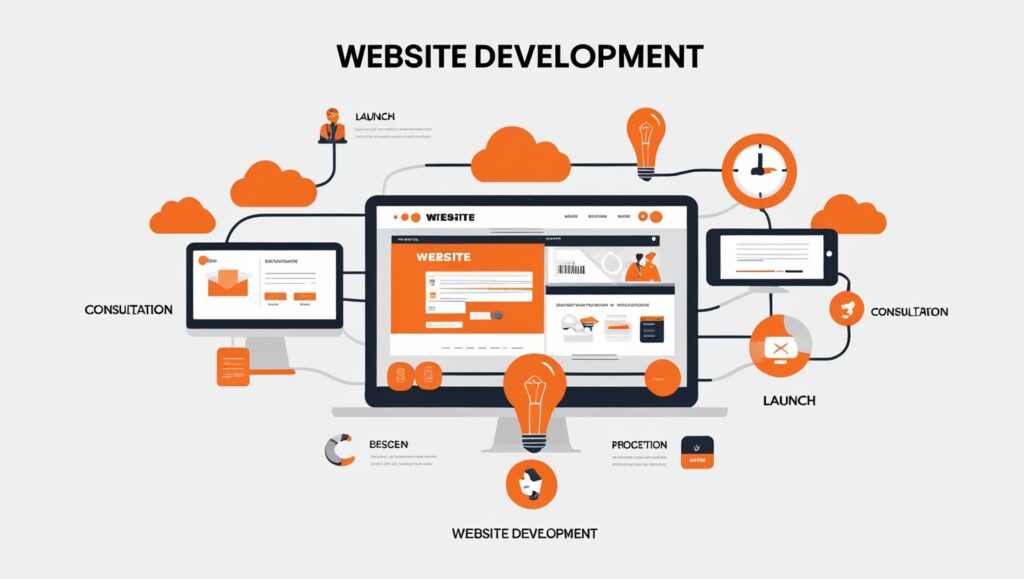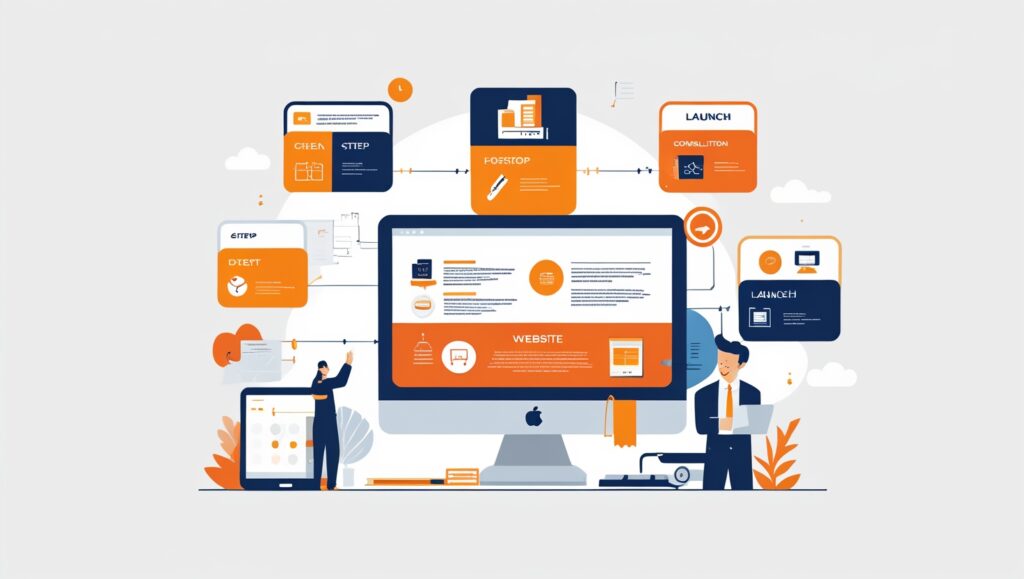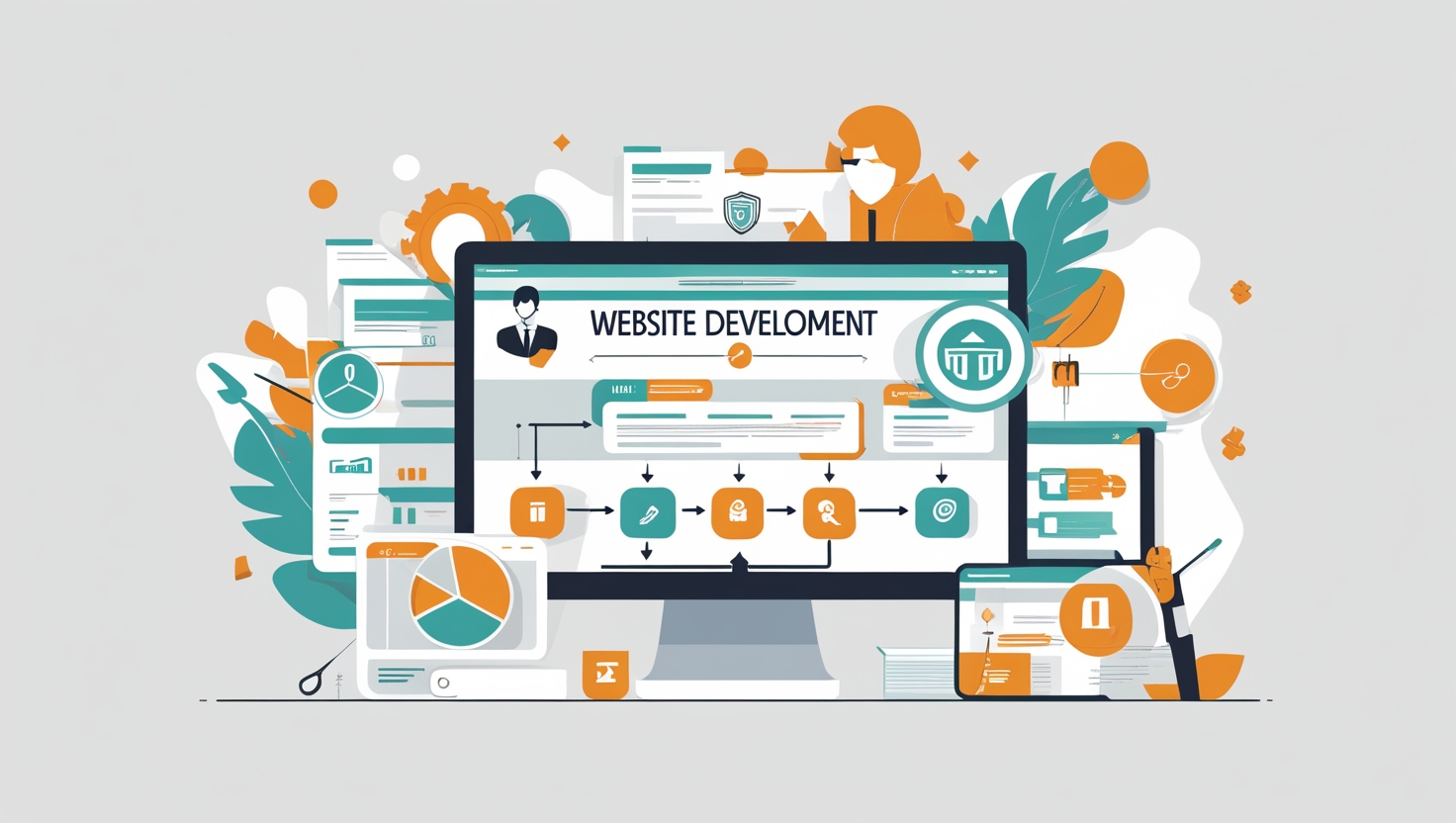Building a successful website starts with a well-defined process. If you’re planning to create a WordPress site or hire a developer, understanding the WordPress website development process is crucial. A structured process ensures your site is functional, fast, and meets business goals.
In this guide, we’ll break down the typical development process from initial planning to launch and maintenance. Whether you’re a business owner or an aspiring WordPress developer, this overview will help you grasp how a professional site is built.
Why a Clear Development Process Matters
Without a clear process, projects risk delays, overspending, and poor functionality. A proper workflow helps:
- Define clear goals and deliverables
- Manage time and resources efficiently
- Ensure scalability, performance, and security
- Deliver a great user experience
👉 I follow a transparent Services Page workflow to keep every client informed from start to finish.

Step 1 – Consultation & Discovery
Everything begins with understanding your needs.
During this phase, the developer asks about your business, target audience, design preferences, functionality needs, and competitors.
👉 For example, during my initial discovery, I often map out sitemaps to visualize the full structure before moving to design.
Step 2 – Proposal & Agreement
Once goals are clear, I provide a detailed proposal outlining:
- Project scope
- Timeline
- Deliverables (e.g., number of pages, e-commerce setup)
- Cost breakdown
Both parties sign an agreement with a payment plan—typically a 50% upfront deposit.

Step 3 – Design & Wireframing
A successful WordPress site starts with good design.
Wireframes and mockups are created using Figma or Adobe XD to outline:
- Page layout
- Navigation structure
- Call-to-action placements
👉 You can see examples of this process in my Portfolio Page, where I explain the planning behind every project.
Step 4 – Design Review & Online Proofing
Clients review designs via online proofing tools, providing feedback directly on wireframes or mockups.
This step prevents miscommunication and ensures the final design aligns with the business vision before coding starts.
Step 5 – Development & Coding
Using tools like Elementor, Oxygen Builder, or custom PHP coding, the approved design is built into a fully functional WordPress website. Key steps include:
- Creating custom templates
- Setting up plugins and custom fields (ACF)
- Implementing WooCommerce for e-commerce sites
- Integrating payment gateways (Stripe, PayPal)
👉 For example, I built the GreatProduct.in e-commerce site using WooCommerce, ensuring the site was fast and SEO-ready.
Step 6 – Quality Assurance & Testing
Before going live, I perform rigorous QA:
- Cross-browser testing (Chrome, Firefox, Safari)
- Mobile responsiveness checks
- Performance optimization (using tools like GTmetrix)
- Security checks (SSL, firewalls)
This ensures the site performs perfectly across all devices.

Step 7 – Launch & Deployment
Once testing is complete, I handle:
- DNS setup
- Hosting configurations
- Migration from staging to live
- Final content review
Clients are guided on how to manage their website moving forward, with basic training if needed.
Step 8 – Support & Analytics (Post-Launch)
After launch, I provide support:
- Bug fixes
- Plugin and WordPress updates
- Performance checks
- Google Analytics setup for traffic monitoring
👉 Learn more about how I provide ongoing support in my Contact Page.
Best Practices in the Development Process
- Follow clean coding standards to ensure site speed
- Use a mobile-first design approach to enhance UX
- Keep the backend simple for easy content management
- Focus on SEO during development, not after
Conclusion
Understanding the WordPress website development process helps you choose the right developer and ensures your project stays on track. A structured approach leads to faster delivery, fewer surprises, and a site built for performance and growth.
👉 Ready to build your custom WordPress website? Visit my Contact Page to discuss your project today.
